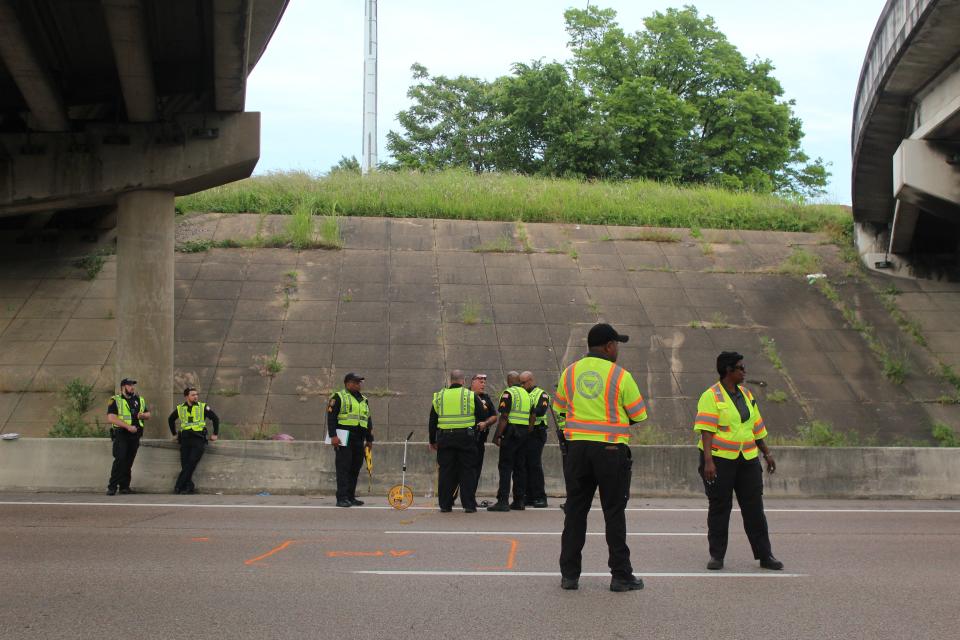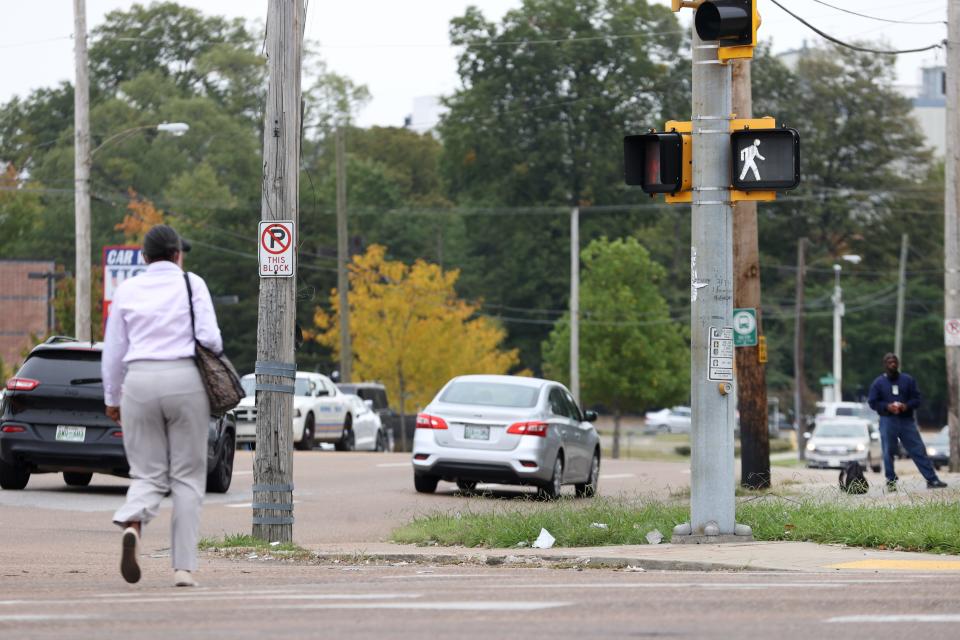'Not a big surprise': Memphis ranks third in the nation for pedestrian fatalities
When it comes to designing roadways that are accessible and safe for cyclists and pedestrians, Union Avenue is now a national example of what not to do.
The busy Memphis thoroughfare was singled out in a report presented by Smart Growth America, a Washington D.C.-based nonprofit that focuses on urban growth policies.
Long, straight and lacking crosswalks for most streets that intersect Union Avenue, researchers at Smart Growth pointed out that Union Avenue is a bustling lifeline in Memphis with grocery stores, restaurants, and medical offices.
But those walking to an essential service on Union have few options for safely crossing streets. Signalized crosswalks are positioned as far as .4 miles apart along some stretches, requiring an extra 10-minute round trip for pedestrians.

"The goal is to keep people from having to stop, to keep vehicles speedily," Beth Osborne said of Union Avenue's lack of crosswalks and "afterthought" sidewalks. Osborne is a program director for Smart Growth America.
From 2016: Report highlights issues with Memphis' roadways
In other news: The 901: What new laws were put into effect in Tennessee; your MLGW bill might increase
Union Avenue, however, is but a slice of a larger problem. Smart Growth's research, which is partly comprised of Centers for Disease Control and Prevention data, ranks Memphis as third in the nation for pedestrian fatalities behind Daytona Beach, Florida's metro area and Albuquerque, New Mexico.
For every 100,000 residents, 3.93 were killed by cars while walking in 2020, according to Smart Growth research.
According to the Tennessee Highway Safety Office, 68 people were killed while walking in Memphis in 2020.
Nationally, Black pedestrians are twice as likely to be struck by a vehicle while walking. Though demographic data for pedestrian fatalities is not compiled by the state, this trend likely holds true in Memphis, a majority Black city.
Memphis' ranking is a continuation of a deadly trend tied to infrastructure built for one purpose only — getting cars through the city as fast as possible. And though Memphis' numbers are among the highest, the infrastructure that lends to such carnage is a regular feature in cities grappling with this problem.
The 20 deadliest cities for pedestrians all exist in the southern half of the United States coast to coast, from Bakersfield, California to Charleston, South Carolina — ranked seven and five, respectively. With seven cities ranked in the top 20, Florida is the deadliest state for pedestrians.
Memphis is the only Tennessee city ranked in the top 20.
"This is not a big surprise because many of these metro areas grew and developed after automobile ownership was widespread. So they were built at a scale to prioritize high-speed travel," said Rayla Bellis, another program director Smart Growth.
By design, Memphis streets prioritize speed and throughput
According to internal data from the Memphis Police Department, 31 pedestrians have been killed so far this year. The latest incident occurred Sunday evening when an unidentified pedestrian was struck by two vehicles consecutively along Raleigh LaGrange Road. The driver of the second vehicle stayed at the scene.
The intersection where this pedestrian was struck is a two-lane road with no sidewalks, trees that canopy the road around the streetlights, and steep ditches on either side.
The posted speed limit is 40 miles per hour, but with no traffic lights for two miles — vehicles have plenty of room to gun their engines past the speed limit. Many do.

Those elements are specifically what researchers point to as primary indicators that a road was designed with speed over safety. Memphis, a city largely sprawled out, is full of such roads from decades of car-focused design.
More from Micaela Watts: Memphis police officer recovering after shooting at an apartment complex
Read this: On when to save a pregnant patient's life, Tennessee hospitals are mostly quiet
Memphis' streets are primarily designed by Tennessee's Department of Transportation, and the same is true of most cities in all 50 states. This leaves cities on the hook to implement and redesign streets.
There are already noticeable examples of Memphis' efforts to implement "traffic calming measures" in the Medical District, the University of Memphis area, and Midtown.
These measures include reducing the number of lanes, lowering speed limits in some areas, and reducing the ease of quickly turning right at intersections with obstacles like giant potted plants.
It's a start, but Smart Growth warns that until the majority of streets in dense, populous areas are made safer for pedestrians, deaths will continue to rise as they have across the country since 2009, by 62% nationally.
"It's not good enough to fix just one corridor, you have to fix all corridors," Osborne said. "Safety has to be the default."
Micaela Watt is is an Access and Equity reporter for The Commercial Appeal and can be reached at micaela.watts@commercialappeal.com.
This article originally appeared on Memphis Commercial Appeal: Memphis ranked third in the country for pedestrian deaths from cars

